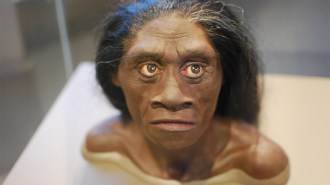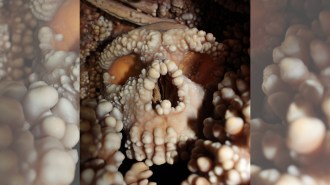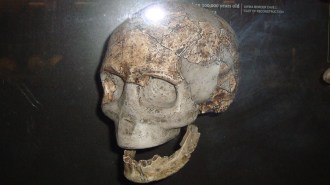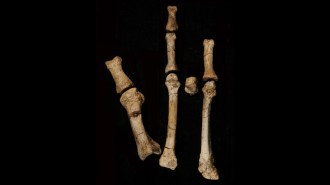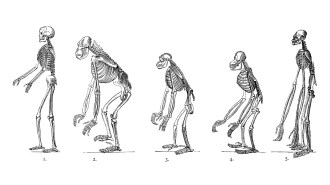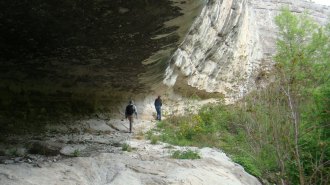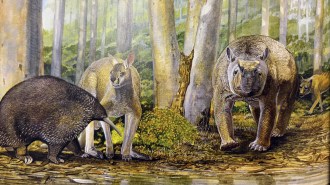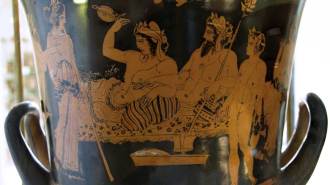Chilean desert cemetery tells tale of ancient trade specialists
Contrary to previous theories, powerful Tiwanaku empire did not rule there
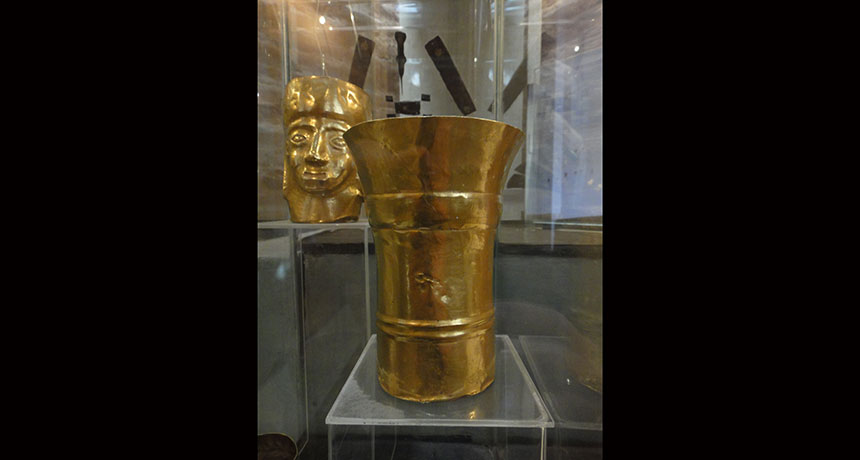
TRADER’S CUP An ancient desert cemetery in Chile contains members of an elite group of locals and outsiders who handled the distribution of goods from a regional trading network, a new study suggests. One of these trade specialists, a foreigner, was buried with these gold drinking vessels, one decorated with a human face.
C. Torres-Rouff
An ancient cemetery in northern Chile’s Atacama Desert is helping to rewrite the region’s past. This burial ground housed the remains of a far-flung, well-connected group of players in what was one of South America’s earliest trade networks, researchers say.
New findings from the roughly 1,500-year-old Larache cemetery support the idea that trade bloomed among societies in the Andes Mountains — but without the direct involvement of the powerful Tiwanaku empire, say bioarchaeologist Christina Torres-Rouff of the University of California, Merced and her colleagues. Tiwanaku society was based in what’s now western Bolivia, but expanded its trading in South America between around 1,500 and 1,000 years ago. Maya civilization flourished during that time in Central America.
Decades-old suspicions that the Larache cemetery, part of an Atacama settlement in an oasis area, was reserved for Tiwanaku emissaries or traders don’t hold up, Torres-Rouff’s group reports online August 12 in the American Journal of Physical Anthropology. Instead, an analysis of head shapes, diets and grave goods indicates that the cemetery held a mix of locals and outsiders. These people belonged to an elite group that administered the local distribution of goods trafficked though a regional trade system, the investigators suspect.
Researchers have debated the nature and extent of relations between Tiwanaku and populations in northern Chile for about 60 years. “I am not surprised that the old model of an ethnic enclave of Tiwanaku traders buried in Larache cemetery is turning out to be too simplistic,” remarks archaeologist William Isbell of Binghamton University in New York.
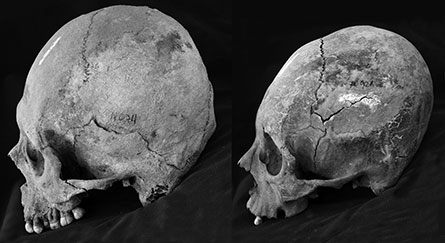
One clue to the cultural origins of the deceased came from their unusual head shapes. Twenty individuals had elongated braincases. Atacama societies and nearby inland groups intentionally achieved this look by wrapping babies’ heads tightly in cloth strips. Another five individuals sported unusually broad braincases. This style, produced by placing pressure on infants’ heads with boards or pads, was more common in Tiwanaku society and on the northern Chilean coast.
All four individuals buried with gold objects had elongated braincases.
Researchers also tested the teeth of 18 individuals for two forms of the element strontium. Strontium from local rock formations collects in tooth enamel as it forms during childhood. Specific strontium ratios can be traced to particular areas. Five people, including one buried with gold objects, displayed signs of having grown up outside the Atacama Desert.
Examination of carbon variants in bones from the same 18 people indicated that three of those with foreign strontium signatures had eaten different foods from the rest. Those individuals probably came from maize-growing regions in Bolivia not far from Tiwanaku, the scientists say.
All five foreigners displayed no or only minor head alterations. An absence of this obvious sign of being foreign may have helped outsiders gain acceptance in desert communities, the researchers suspect.
While some graves contained locally produced pottery, each burial contained objects that were foreign to the Atacama region. That’s consistent with individuals buried there having been viewed as a uniform group, despite their varied geographic origins, the investigators say.
